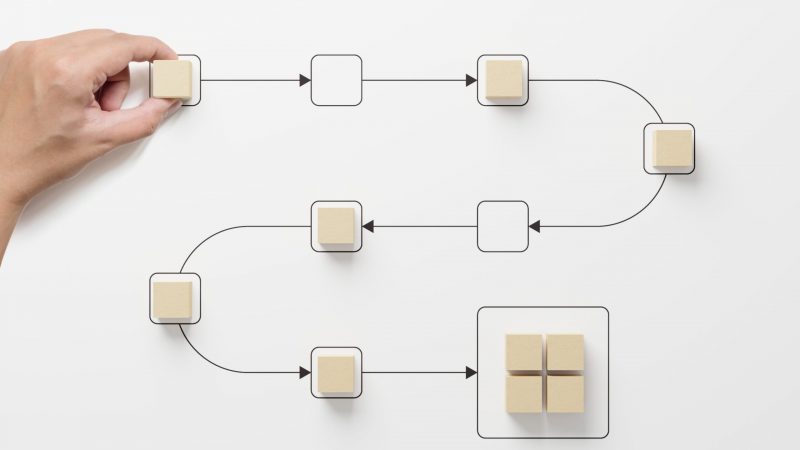Introduction
In today’s hyper-competitive business landscape, customer retention plays a pivotal role in shaping the future of an enterprise. A crucial metric that sheds light on a business’s ability to retain customers is known as the churn rate.
Churn rate, also known as customer attrition rate, is a vital key performance indicator (KPI) used to gauge the rate at which a business’s customer base and revenue streams experience changes. Whether you run a multinational corporation or a small startup, comprehending this rate and its implications can significantly impact your business strategy and bottom line. In this article, we will delve deep into the concept of churn rate, covering this topic thoroughly and highlighting this concept’s overall importance in a customer-centric environment.
“It’s not just marketers who look at churn, however. Many investors will use the metric to evaluate the underlying health of a firm. The higher the churn rate, the more they question the company’s viability”- Harvard Business Review.
Defining and Calculating Churn Rate
Numerically, the churn rate refers to the percentage of customers or subscribers who cease their relationship with a business over a given period. This disengagement could be due to various reasons, such as dissatisfaction with the product or service, better offers from competitors, or changes in customer preferences. Calculating churn rate requires a straightforward formula, yielding a percentage representing the proportion of customers lost during a specific time frame. The calculation for the churn rate:
Churn Rate = (Number of Customers Lost during a time frame / Total Number of Customers at the beginning of that time) x 100.
How you can calculate the churn rate for your business:
- Select a period. Determine whether you want your statistics monthly, quarterly, or annually.
- Track the number of customers you had at the start of that period, and check the number of customers who have churned within that period.
- Divide the number of churned customers by the total number of customers you had for that period, and multiply the sum by 100.
For instance, if a company starts the month with 1000 customers and loses 50 customers during that period, the churn rate would be:
Churn Rate = (50 / 1000) x 100 = 5%
Advantages and Disadvantages of Churn Rate Analysis
Advantages of Churn Rate
1. Insight into Customer Retention: Churn rate gives businesses a clear picture of how well they retain customers. By monitoring this metric, companies can assess the effectiveness of their retention strategies.
2. Enhanced Decision-making: Through churn rate data, businesses can make informed decisions regarding product improvements, customer service enhancements, and targeted marketing efforts. This data-driven approach reduces guesswork and promotes more efficient resource allocation.
3. Early Warning System: A rising churn rate is an early warning sign of potential issues within the business. By spotting increasing churn rates early, companies can take corrective actions to mitigate further losses and preserve their customer base.
4. Competitive Benchmarking: Churn rate allows companies to compare their performance against industry benchmarks. This benchmarking process enables them to gain insights into their market position and competitiveness, driving them to innovate and stay ahead of the competition.
Disadvantages of Churn Rate
1. Limited Context:
Churn rate alone might not identify why customers leave. It lacks the context to pinpoint specific reasons for customer churn, necessitating the use of complementary qualitative data and customer feedback.
2. Short-term Focus:
Focusing too much on short-term churn rate reduction might lead to neglecting long-term customer satisfaction and loyalty strategies. Focusing solely on churn rate without addressing underlying issues could result in dissatisfied customers remaining in the fold.
3. Ignores Customer Value:
Churn rate treats all customers equally, disregarding their value to the company. Losing a high-value, long-term customer has more significant ramifications than losing several low-value customers.
Important Facts About Churn Rate: Leading churn rate refers to the predictive churn rate and is used to forecast future churn based on leading indicators such as customer behaviour, usage patterns, customer complaints, engagement levels, or any other relevant metrics correlating to future churn. Lagging churn rates, on the other hand, refers to the historical churn rate based on actual customer attrition that has already occurred over a specific period. It is the more traditional and straightforward way of calculating churn.
Importance of a Low Churn Rate
A low churn rate is critical for businesses operating in various industries, particularly for subscription-based and software service companies. It confers several crucial benefits that bolster their competitive position. One of the significant advantages lies in gaining a distinct edge over competitors in highly competitive markets. By consistently retaining customers, these businesses showcase their ability to meet customer expectations, setting them apart from rivals and securing a larger market share.
Moreover, maintaining a low churn rate ensures a stable and predictable revenue stream. Unlike acquiring new customers, retaining existing ones is more cost-effective, as it reduces the need for extensive marketing and sales investments. This stability proves invaluable, allowing companies to weather economic downturns or competitive challenges while generating revenues.
Reducing churn also leads to decreased operational costs. High churn rates necessitate significant actions for customer acquisition and onboarding to replace lost customers. If churn is low, companies can efficiently allocate resources and invest in long-term growth initiatives.
Finally, a low churn rate contributes significantly to brand development. It signifies that customers are genuinely satisfied with the product or service, fostering positive word-of-mouth and enhancing corporate reputation. Such heightened trust and positive perception result in increased customer referrals with higher conversion rates, leading to organic growth and further solidifying the market position.
How to improve churn rates
Improving churn rates requires a comprehensive and strategic approach to address various aspects of a company. It can be done by:
Data-Driven Customer Segmentation:
Analyze customer data to identify patterns and segment customers based on behavior, preferences, and needs. Tailor personalized experiences, offers, and communication to enhance customer satisfaction and loyalty.
Proactive Customer Support:
Implement foresighted customer support initiatives, such as predictive issue resolution and personalized assistance. Anticipate and address customer concerns before they escalate, demonstrating a commitment to customer success.
Competitive Analysis:
Continuously monitor the competitive landscape to interpret the offerings and strategies of competitors. Differentiate your products by emphasizing unique value propositions that cater to your target audience.
Continuous Product Development:
Regularly update and enhance your products or services based on customer feedback and market trends. This iterative approach ensures that your offerings remain relevant and valuable to your customer base.
Exit Surveys and Feedback Analysis:
Conduct exit surveys to understand the reasons behind churn. Analyze the feedback to identify common pain points and address root causes, and work to prevent future churn.
Customer Success Teams:
Establish dedicated teams to engage with customers, understand their evolving needs, and address any issues regularly.
“Get closer than ever to your customers. So close that you tell them what they need well before they realize it themselves.” –Steve Jobs.
To summarize, improving churn rates requires a holistic approach encompassing data-driven insights, personalized experiences, proactive support, continuous innovation, and customer-centric strategies.
Case Study of Businesses which successfully reduced churn rates
Netflix
Netflix achieved a declining churn rate trend from 4.9% in 2011 to 1.9% in 2020.
They achieved it by using data analytics to personalize content recommendations and improve customer experience.
Strategies applied:
- Implemented a recommendation engine that analyzes user behavior and preferences to suggest relevant content.
- Improved customer service by offering a 24/7 support team and personalized communication.
Spotify
Spotify reduced its churn rate from 5.8% in the second quarter of 2018 to 4.8% in the fourth quarter of 2019.
They achieved it by offering personalized playlists and exclusive content.
Strategies Applied:
- Developed algorithms that analyze user behaviour and listening patterns to create personalized playlists and recommendations.
- Offered exclusive content, such as podcasts and live events, to keep users engaged and subscribed.
Sky Germany
Sky Germany reduced its annual rolling churn rate from 21% in early 2010 to just 8.2% in late 2014.
Strategies applied:
- Invested heavily in improving its customer service experience, including increasing staffing levels, implementing new training programs, and introducing new self-service options for customers.
- Funded new technologies, such as 4K Ultra HD and virtual reality, and secured exclusive content deals with major studios and networks to improve customer retention.
- Introduced flexible payment options for customers and created low-priced packages for budget-conscious consumers.
Conclusion
In conclusion, churn rate is a fundamental metric that offers valuable insights into a company’s customer base, revenue potential, and overall health. By prioritizing customer retention and understanding the factors driving churn, businesses can make informed decisions, enhance customer satisfaction, and foster long-term loyalty, ultimately ensuring their continued success in an ever-changing marketplace.



